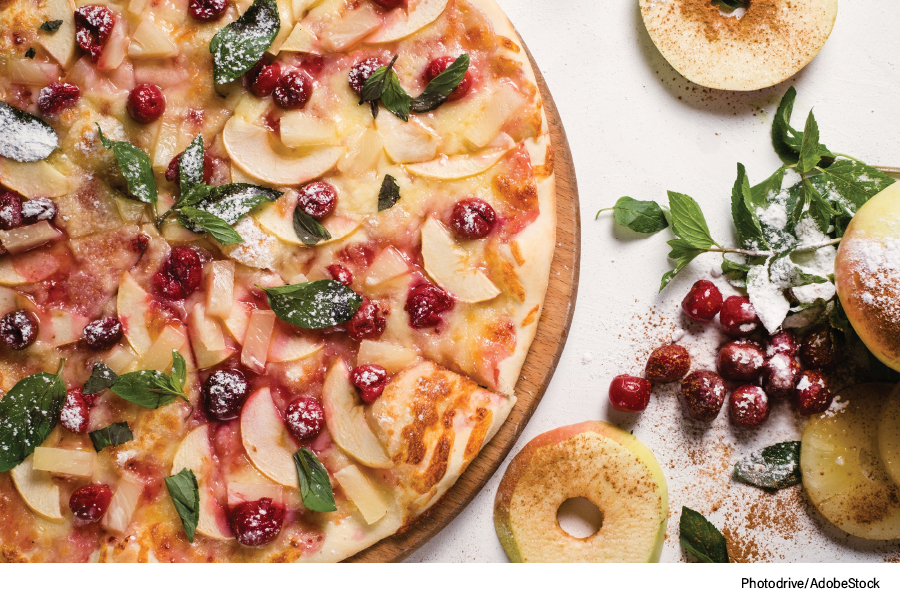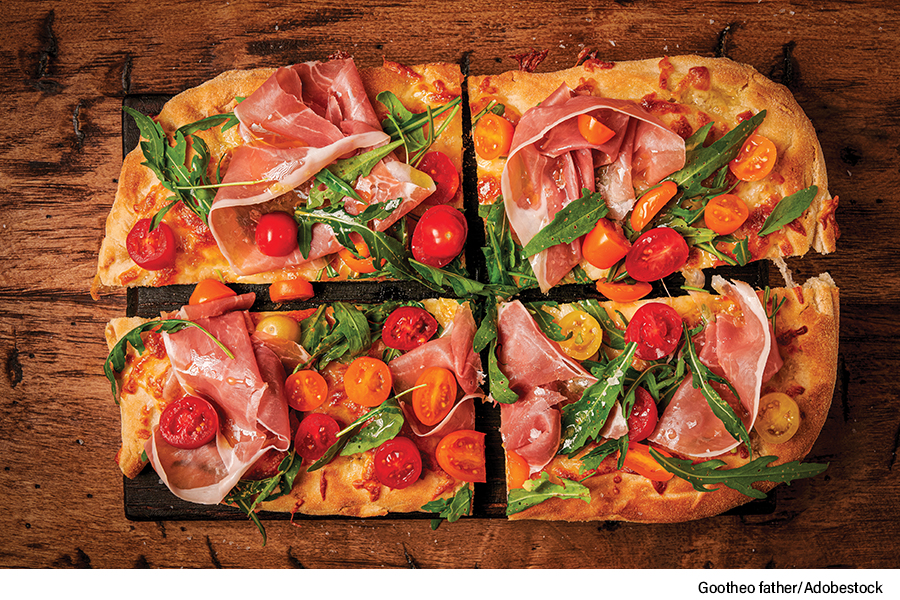How customer data helps fuel results
With New York on lockdown amid COVID-19, Brad Barnes ordered from his local pizza place every Thursday. Though Barnes had previously shared his e-mail and mobile number with the pizzeria, the shop never once used that information. No personalized text prompting another Thursday order. No e-mail touting additional offerings like wings or dessert.
“Sure, I continued ordering from them, but it was a missed opportunity for them to really engage me,” says Barnes, director of consulting and industry programs at the Culinary Institute of America.
Put aside the big data buzz.
Despite the ubiquitous presence of robust point-of-sale systems, effective customer relationship management software and digital ordering platforms that can push out relevant data to drive traffic, customer service and sales, many pizzerias across the U.S. struggle to use any customer data.
“The mechanisms are there to generate data. All we have to do is distill it and use it,” Barnes says. “It’s one of the biggest ills in our industry and it’s going to have to change rapidly.”
Collecting key information
The increasing digitization of the restaurant world has made it easier than ever for dining establishments to capture data. With online ordering and mobile apps becoming more mainstream – a reality accelerated by the COVID-19 pandemic – pizzerias have a viable way to collect customer data, information they can later deploy to boost customer service, inform marketing efforts and fuel sales.
Beyond digital ordering platforms, Karen Zaniker, a partner with Synergy Restaurant Consultants who has been devoted to restaurant marketing for the last 25 years, says every guest touchpoint is a way to encourage data collection – from tabletops, napkins and receipts to special events, social media, contests and website pop-ups. She touts e-mail clubs and loyalty programs as baseline ways stores can begin collecting customer data, adding that many customers will volunteer personal information in exchange for a benefit, such as a free birthday pizza or a discount on their next order.
One important note, Zaniker adds: gather as much information as possible off the bat.
“Once someone’s in the program, it’s hard to gather information retroactively, so the more you can gather up front, the better,” she says.
At a minimum, pizzerias should seek to capture name, e-mail, mobile number and physical address. The mobile number, in particular, can be used as a unique identifier for future activations. Thereafter, birthdates and household information can prove helpful and spur unique personalized offers around children’s birthdays or Mother’s Day.
“The more relevant we can be with our marketing messages, the more likely a guest is to respond,” Zaniker says.
With basic customer information in the system, operators can then layer on ordering information to generate a more complete picture of each guest. When, what and how do they order? How often? Do they only order with a coupon in hand?
“Brands must gather the data that helps them know and understand their various customer segments and how to interact with them,” says Hope Neiman, chief marketing officer at Tillster, a leading digital ordering solutions firm.
Leveraging data to drive sales
With customer information in hand, pizzerias can entice visits with new product launches, limited-time offers, seasonal specials, catering or meal kits. Data around what customers purchase and when, meanwhile, can help pizzerias refine their menu mix, staffing, food prep and marketing efforts.
“Data can be the straw that stirs the entire drink,” Zaniker says.
Consider the tried-and-true birthday gift. According to Zaniker, sending out a special offer such as a complimentary appetizer or dessert to mark a birthday is a proven way many eateries have used data to spark sales.
“And a good one, too, because virtually no one likes to celebrate alone,” she says.
Knowing when customers visit can also prove beneficial. Instead of trying to bring the customer who orders dinner once each week in with a coupon for a lunch offer, Neiman says it makes more sense to nudge that same once-a-week dinner guest toward a second weekly dinner.
“By knowing when they like to order out, the restaurant can target their efforts prior to or during this period, vying for an extra dinner visit and doubling the customer’s weekly spend,” she says.
And if that weekly dinner guest suddenly stops visiting, then Zaniker urges the restaurant to reach out and revive the relationship.
Customer data also opens the door to upsell and cross-sell opportunities. Combining the menu mix with customer dining habits, restaurants can share relevant offers. For example, a restaurant might notice that a customer orders on weeknights around 6:00 p.m. and subsequently send an offer designed to boost check size, such as, “Work got you hungry? Add wings to today’s dinner for only $2.99.”
“After receiving this discount, the customer may be more inclined to increase the size of their order during their usual stop,” Neiman says.
For Barnes, who has done restaurant repairs for the better part of 20 years, customer data is the powerful, all-purpose tool pizzerias can use to communicate with guests, enhance service and drive profitability.
“To rethink your restaurant, you need to have something that drives process and that’s data,” Barnes says.
Customer data is vital to personalized marketing
According to Tillster’s Hope Neiman, data is the way restaurants can shift their operation to meet the hyper-personalized marketing that resonates heavily with today’s consumers.
“Personalization is all about understanding your customers and interacting with them in ways that feel familiar,” Neiman says. “Customers appreciate when you know what they have ordered in the past and value their time by reoffering them their favorites.”
Whether pizzerias are trying to drive a specific outcome like an incremental visit or letting user data drive their actions in automated ways such as customized push notifications, Neiman says data should be informing campaigns in ways that make the experience feel “more one-on-one, more conversational.”
“Restaurants who utilize hyper-personalized approaches can market to their guests based on what they like to eat, what they like to see, what they want to experience [and] when they want to experience it,” Neiman says.
Daniel P. Smith, a Chicago-based writer, has covered business issues and best practices for a variety of trade publications, newspapers, and magazines.









